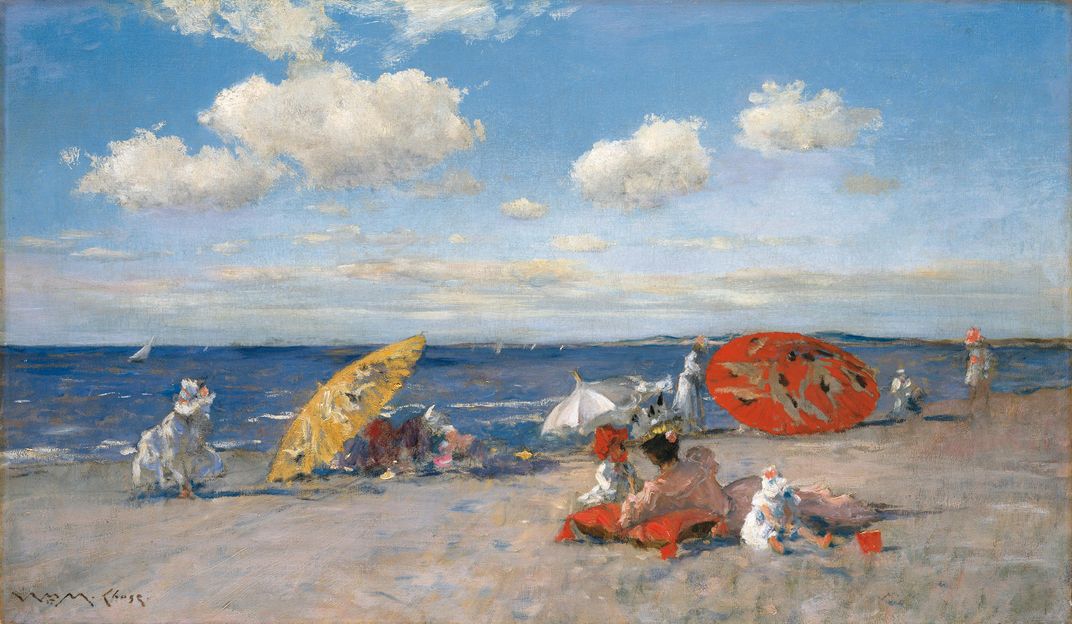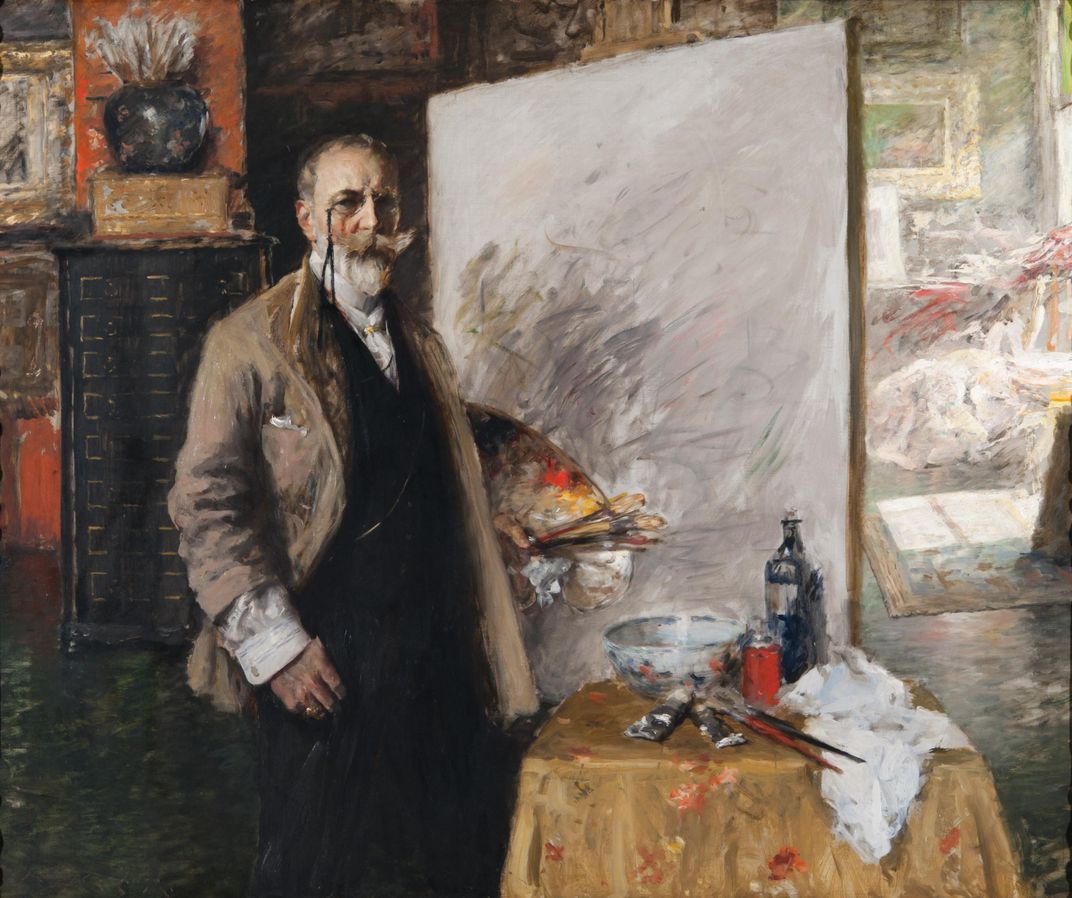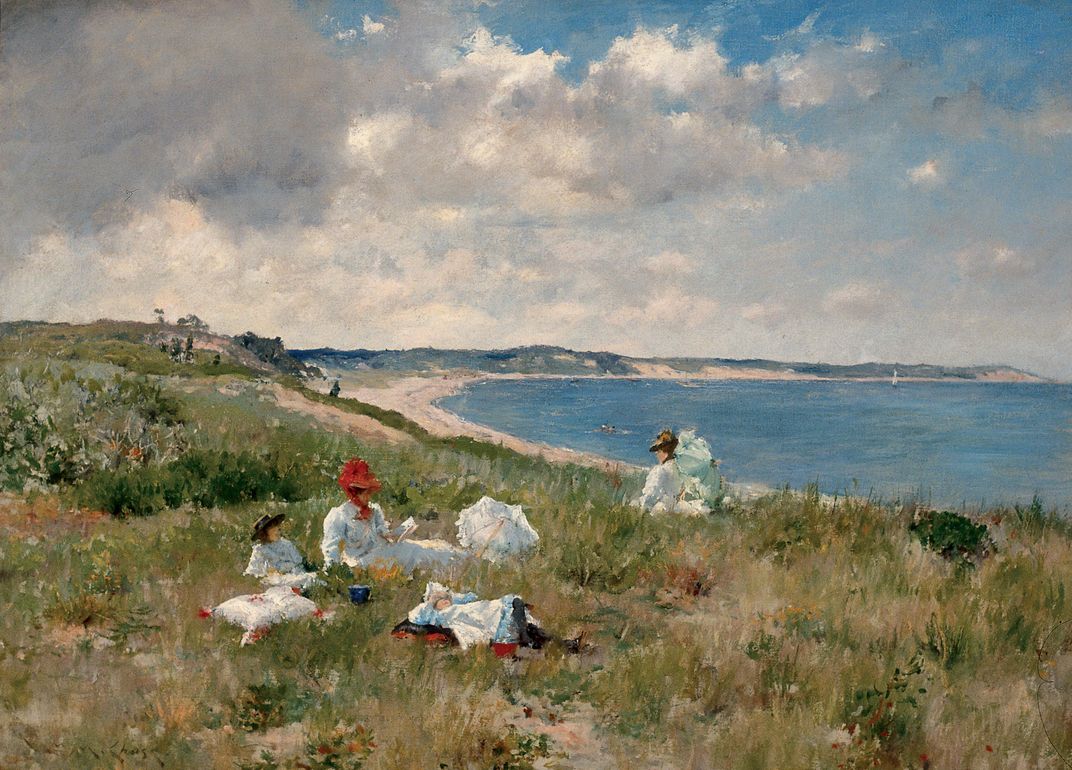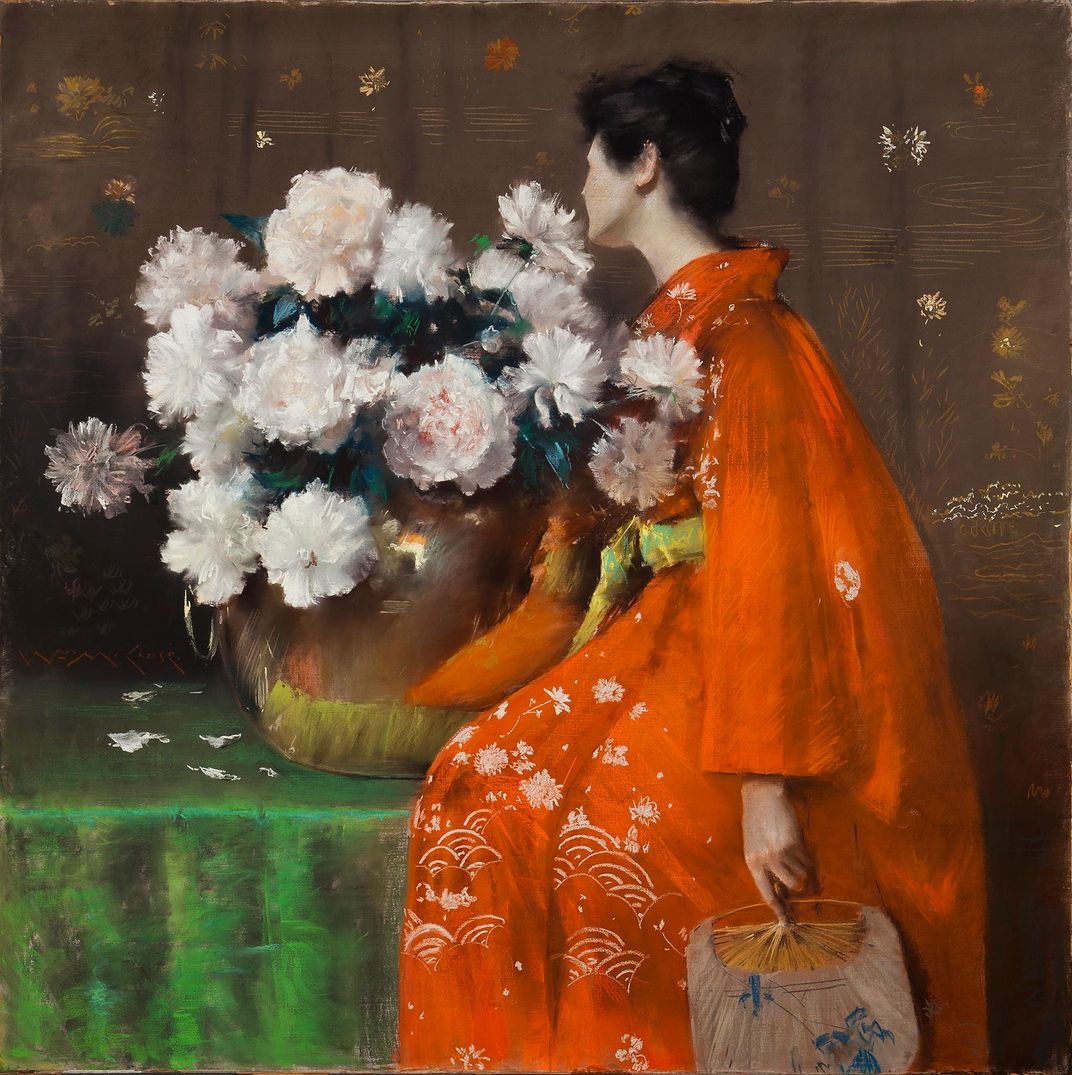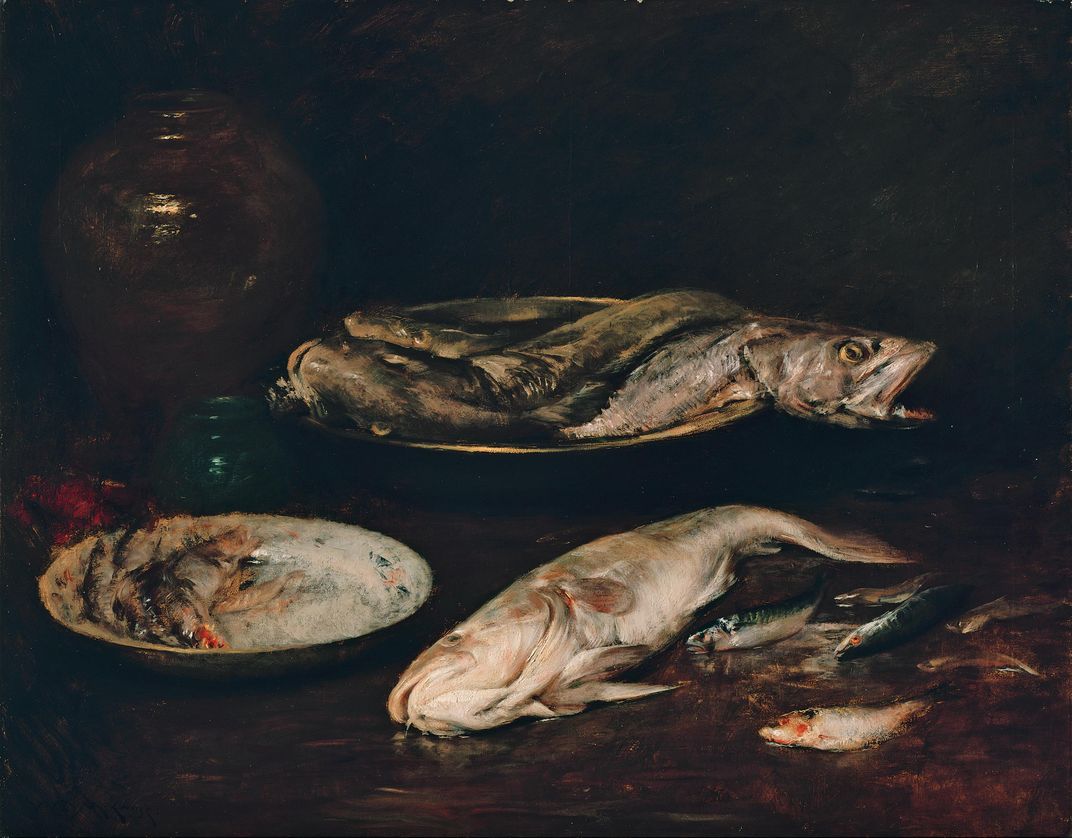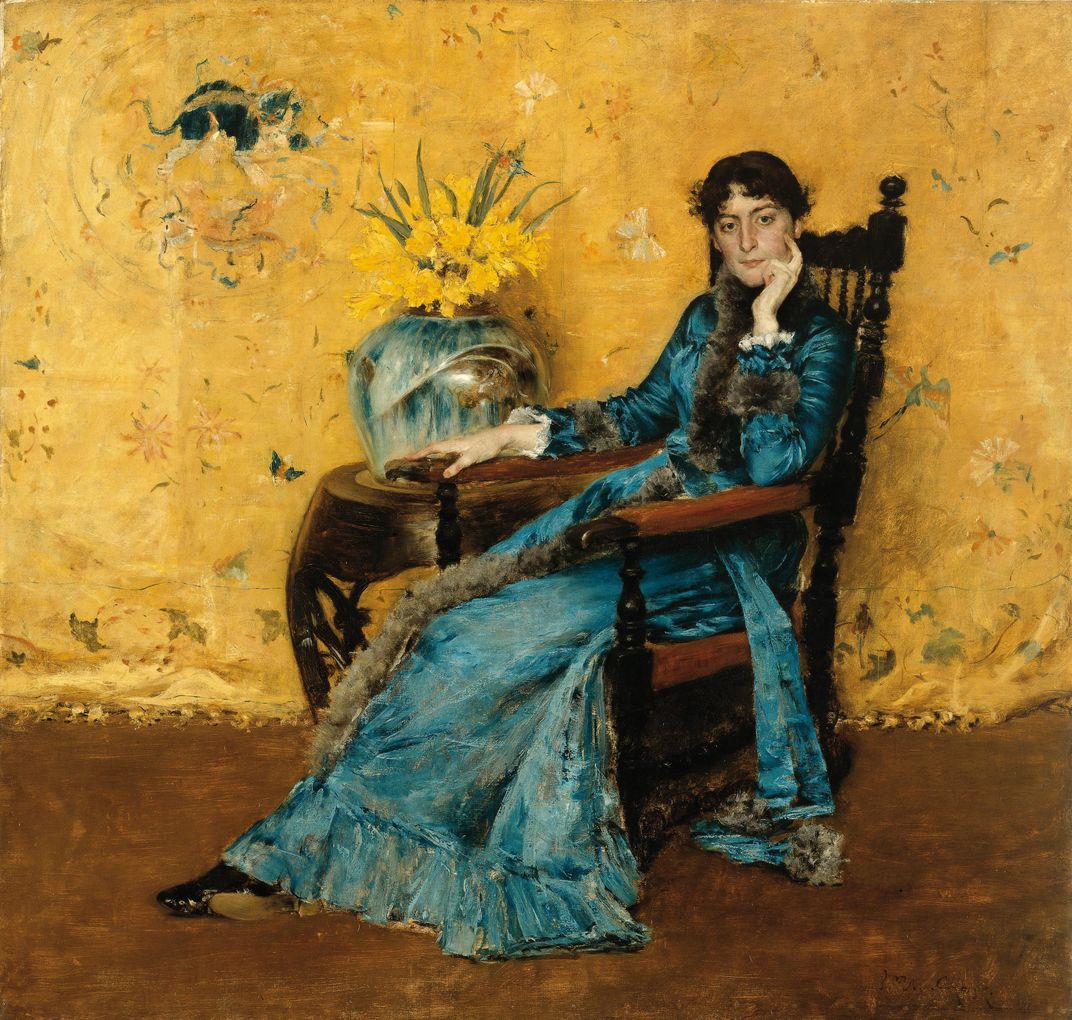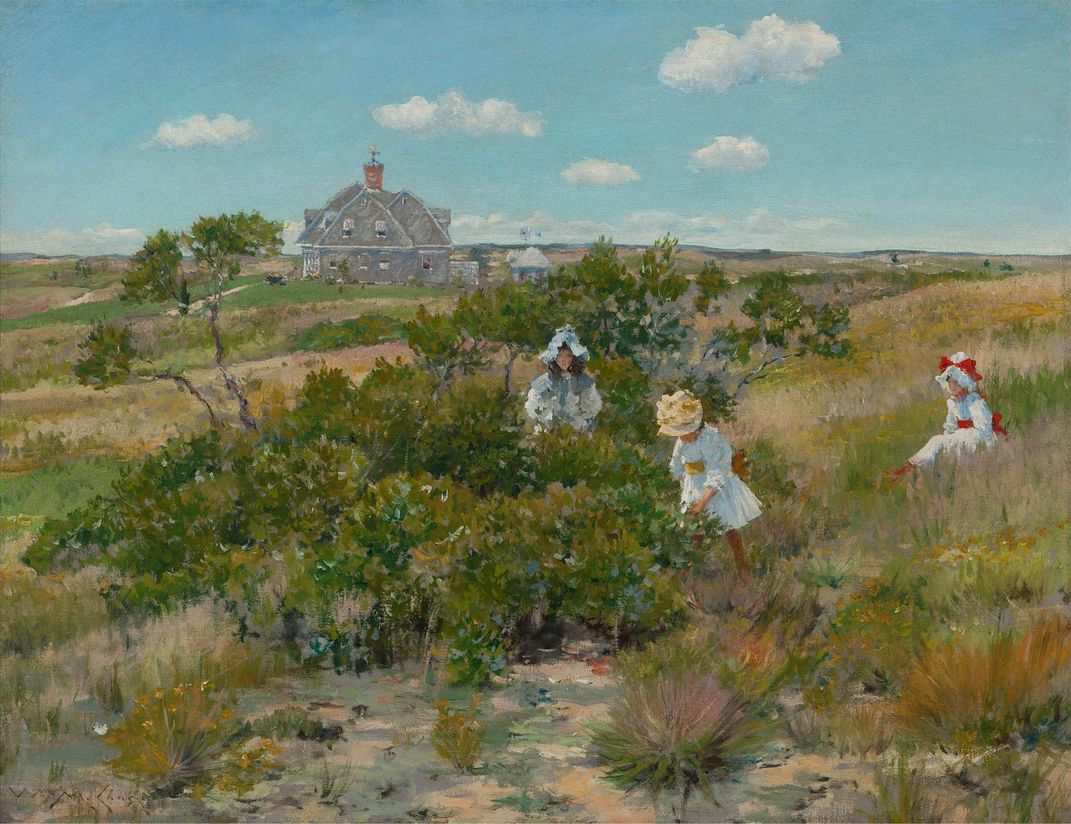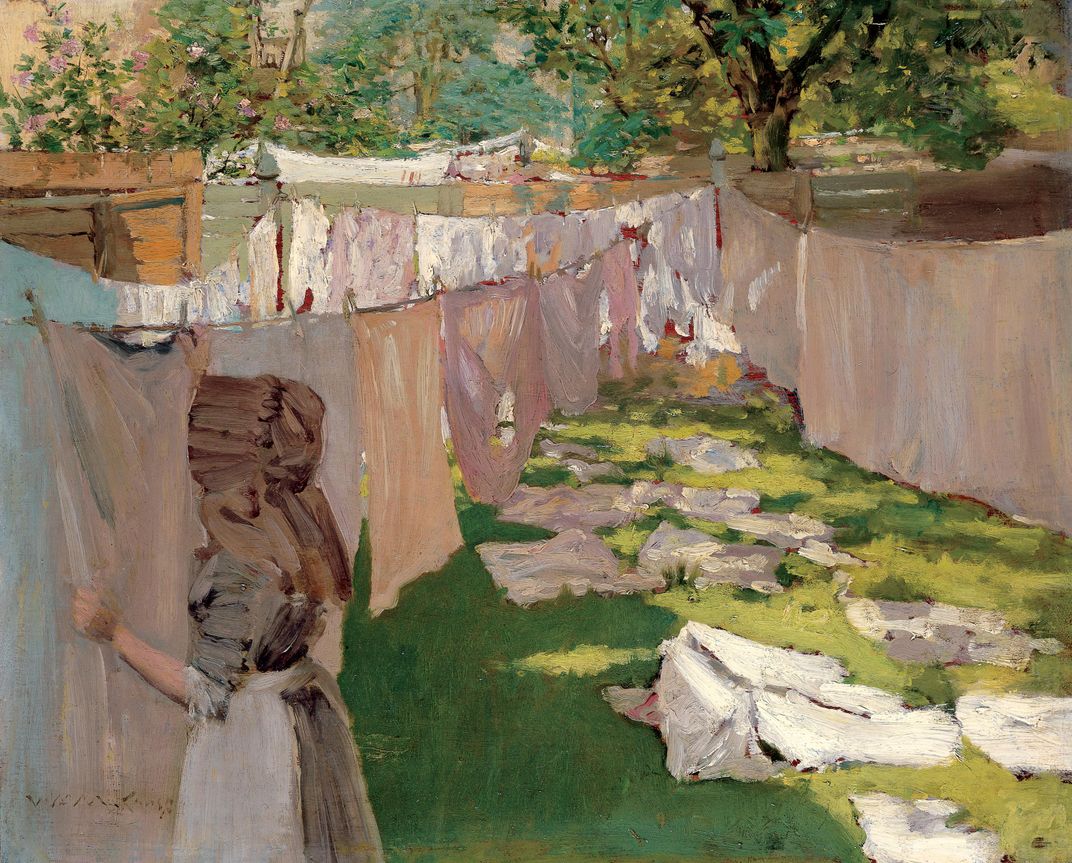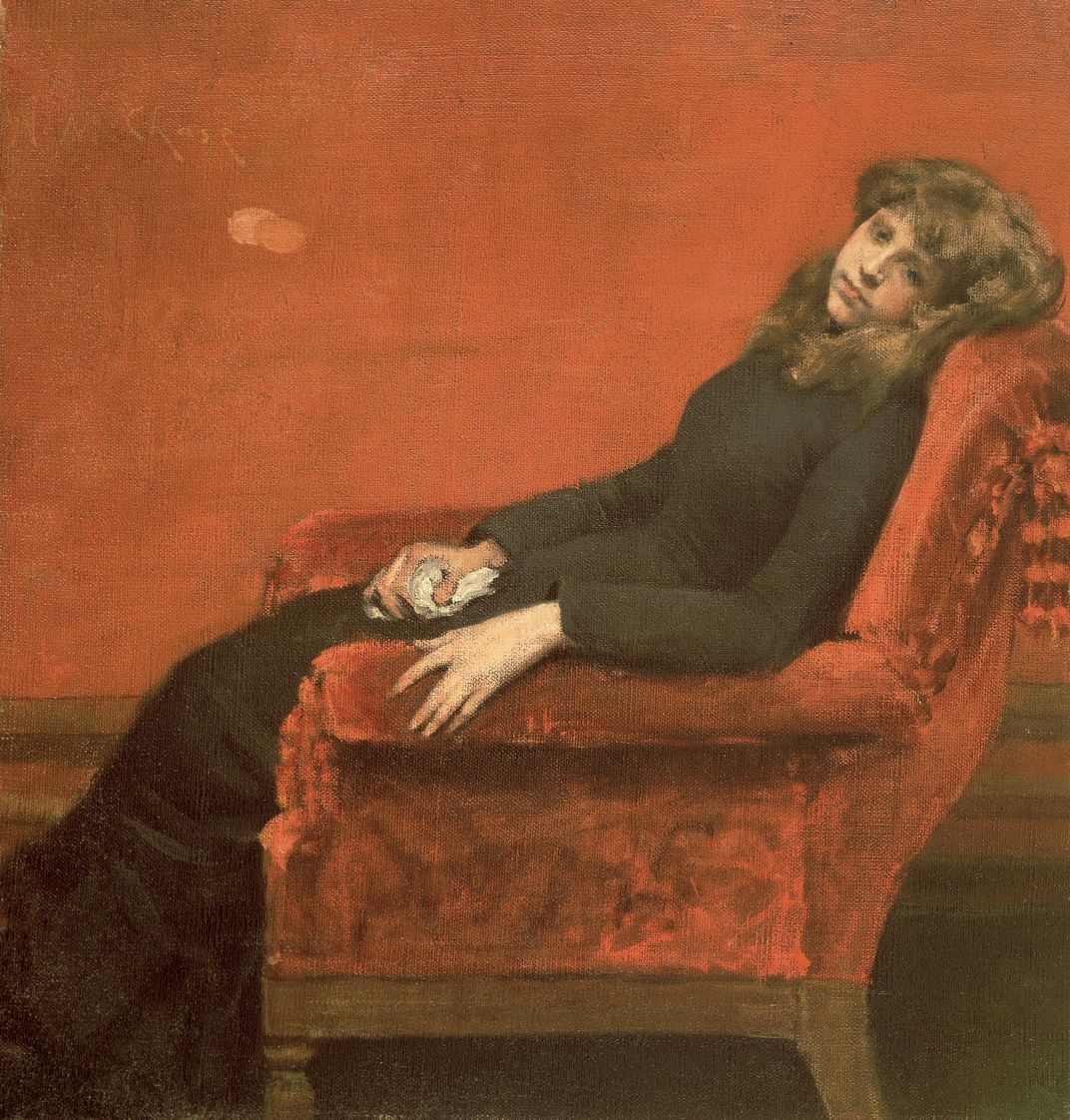Meet William Merritt Chase, the American Master Coming Back into Fashion
At the turn of the century, Chase was one of the most well-known painters and teachers in the United States. A new exhibit revisits his revolutionary skill
Many consider the 1913 Armory Show in New York as the starting gun for 20th century art in America. It introduced the art crowd to cubism, futurism and Marcel DuChamp’s Nude Descending a Staircase. It was the beginning of a whole new aesthetic, but for William Merritt Chase, it marked the end of a long and happy career.
Chase, a pillar of the New York art community and teacher of such notables as Georgia O’Keefe and Edward Hopper, visited the exhibit six times, but could not wrap his head around the new styles, Stanley Meisler reports the Los Angeles Times. “I have tried in vain,” he said in a lecture as Meisler reports, “to find out what the aim of it all is.”
When he died three years later at the age of 67, Chase’s work was already being overshadowed by the modernists. While the reputations of his contemporaries like John Singer Sargent and James McNeill Whistler have increaseed over time, Chase has fallen into obscurity.
A new exhibit at the Phillips Collection in Washington, D.C., celebrating the centennial of Chase’s death argues that he should be counted right alongside those other artists. In fact, in many ways he was the vanguard of “modern” art in his day. “He is quite revolutionary,” exhibit curator Elisa Smithgall tells Meisler.
Born in Indiana in 1849, the son of a shopkeeper, Chase decided to study art in Munich instead of the much more fashionable Paris. He chose the city because of its lack of distractions (Paris, at that time, was considered to be one big artist party) that allowed him to focus on copying the old masters, Susan Stamberg at NPR writes.
“You can look at a picture a million times, but as an artist he wants to know how did they absolutely create that?” Smithgall tells Sandberg. “And the only way to really understand the process of the brush was to copy it.”
He absorbed the techniques of Europe, but when he came home to New York, he added his own eclectic style, informed by both impressionism and realism, the old masters and his New World contemporaries. His subject matters were new for the time as well—he explored public spaces like parks and beaches and painted women in settings and poses previously reserved for men.
It was a sophisticated, cosmopolitan style with an American spark. “You walk around these galleries and the paintings are gutsy and bold and scintillating and brilliant,” Dorothy Kosinski, director of the Phillips tells Stamberg.
Meisler writes that in the 1880s Chase dominated the American art scene, and kept a studio chock full of props and interesting objects. Not only did he teach and run an art school throughout his career—a move that other artists criticized—he also let critics, students and friends watch him as he painted.
“Today, as the history of American art is being rewritten through 21st‐century eyes, long overlooked but revolutionary figures like Chase deserve renewed attention,” Elsa Smithgall says in a press release. “While the artist’s so‐called ‘eclecticism’ has made it a challenge for scholars to fit him into a particular art movement, this exhibition firmly redresses that position by asserting that Chase’s stylistic experimentation is one of his strongest virtues.”
